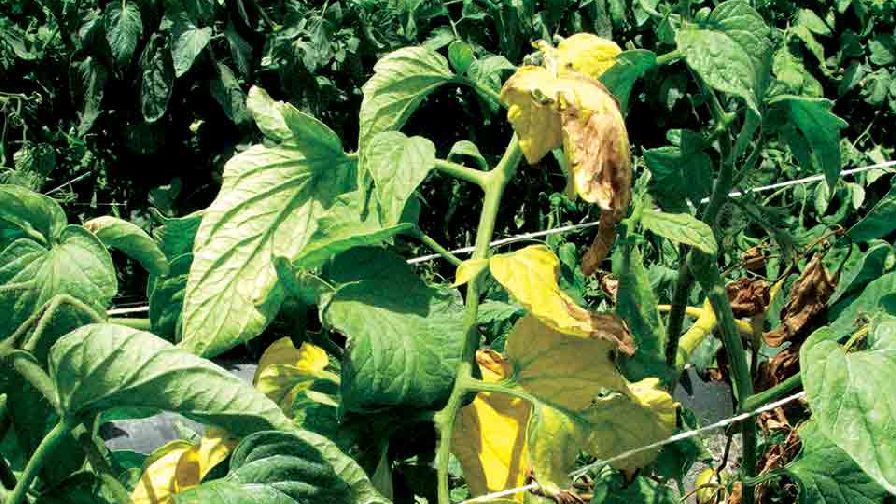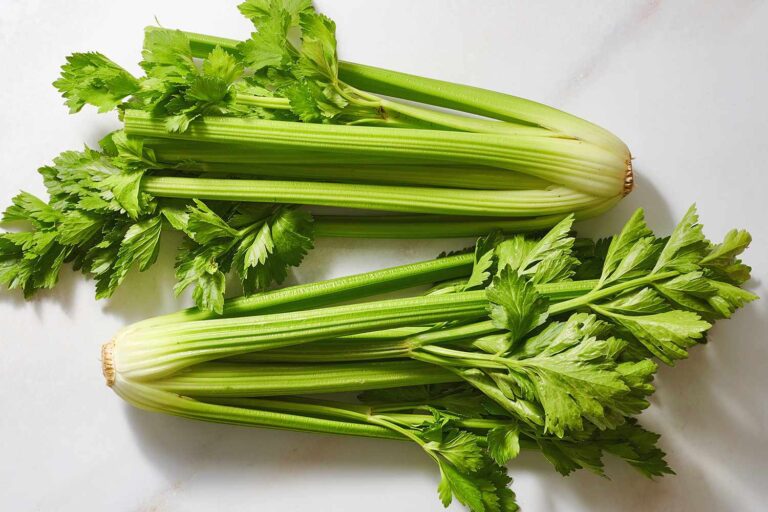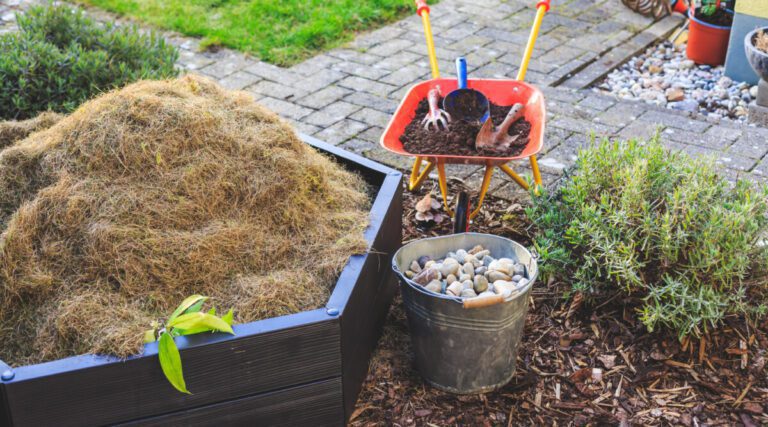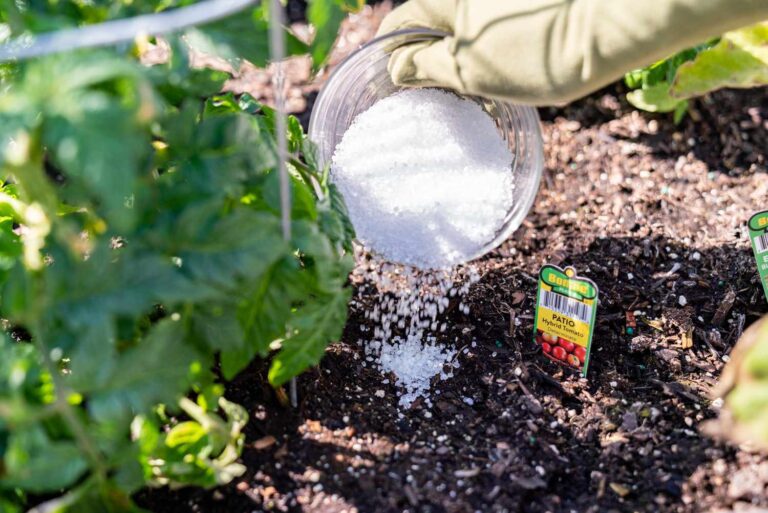Fusarium Wilt: Prevention and Control
Understanding Fusarium Wilt: A Threat to Plant Health
Fusarium wilt, caused by the fungal pathogen Fusarium oxysporum, poses a significant threat to the health and productivity of various plants. This devastating plant disease affects a wide range of crops including tomatoes, melons, cucumbers, strawberries, and bananas, among others. Fusarium wilt is known for its ability to persist in the soil for long periods, making it challenging to manage and control.
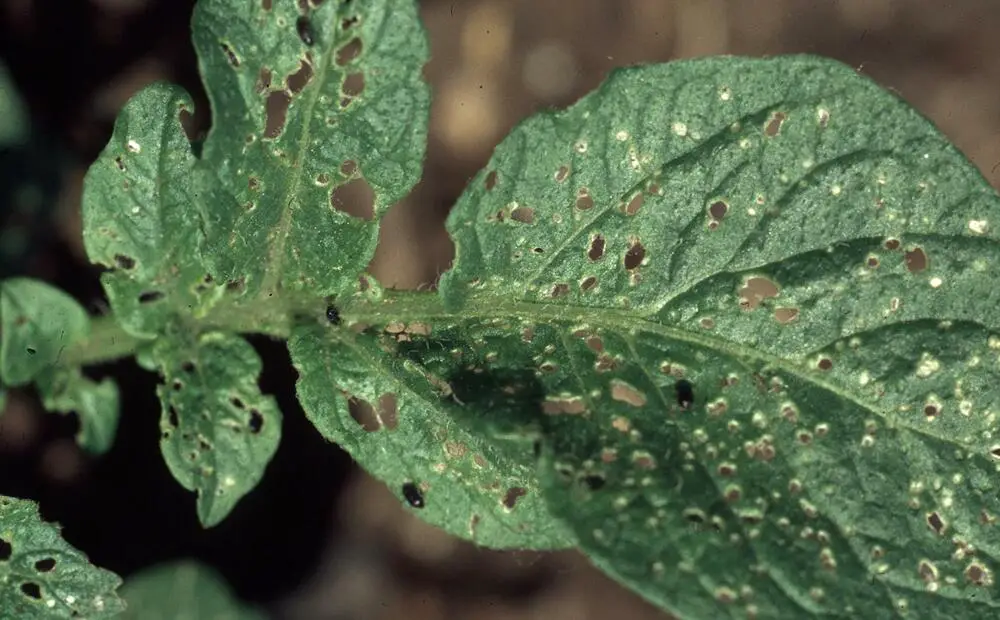
The impact of Fusarium wilt on affected plants is severe, leading to stunted growth, yellowing or browning of leaves, wilting of plant tissues, and ultimately, plant death. The fungus invades the vascular system of the plant, disrupting water and nutrient transport, which further contributes to its decline. With its ability to spread through contaminated soil, contaminated tools, and infected plant debris, Fusarium wilt can rapidly devastate entire crops, resulting in significant economic losses for farmers and gardeners alike. Understanding the nature and dynamics of this threat is crucial in developing effective strategies to mitigate its impact on plant health.
Identifying the Symptoms of Fusarium Wilt in Plants
Fusarium wilt is a devastating plant disease that affects a wide range of crops, causing significant economic losses for farmers and gardeners alike. Identifying the symptoms of Fusarium wilt in plants is crucial for early detection and effective management of this destructive pathogen.
One of the key indicators of Fusarium wilt is wilting and yellowing of leaves, which typically starts in the lower portions of the plant and gradually progresses upwards. This wilting is often accompanied by stunting of the plant’s growth and a general decline in overall vigor. As the disease progresses, the affected leaves may develop brown necrotic lesions, and in some cases, the plant may show signs of defoliation.
It is important to note that the symptoms of Fusarium wilt can vary depending on the specific plant species and the strain of the pathogen involved. Therefore, it is essential to consult trusted sources or seek advice from local agricultural extension services to accurately identify the symptoms of Fusarium wilt in specific plants. By promptly recognizing these signs, gardeners and farmers can take appropriate measures to mitigate the spread of the disease and minimize its impact on their crops.
The Role of Fungicides in Preventing Fusarium Wilt
Fusarium wilt is a devastating fungal disease that affects a wide range of plants, including tomatoes, cucumbers, and melons. The use of fungicides plays a crucial role in preventing the occurrence and spread of this disease.
Fungicides are chemical substances specifically designed to control fungal infections in plants. They work by inhibiting the growth and reproduction of fungi, effectively reducing the severity of Fusarium wilt. By applying fungicides at the right time and in the correct dosage, gardeners and farmers can protect their crops from this destructive disease.
It is important to note that while fungicides can be an effective tool in preventing Fusarium wilt, they should be used as part of an integrated pest management (IPM) approach. This means that fungicide applications should be combined with other preventive measures, such as crop rotation, sanitation practices, and the use of resistant plant varieties. Additionally, it is essential to carefully follow the instructions and safety guidelines provided by the fungicide manufacturer to ensure their proper and responsible use. By integrating fungicides into a comprehensive management plan, growers can reduce the risk of Fusarium wilt and safeguard their plants’ health.
Cultural Practices to Minimize Fusarium Wilt Risk
To minimize the risk of Fusarium wilt in plants, it is essential to implement cultural practices that promote a healthy growing environment. One effective practice is practicing crop rotation. By rotating susceptible plants with non-host plants, you can disrupt the life cycle of the Fusarium fungi and reduce their persistence in the soil. This reduces the chances of infection and spread to new plantings.
Another key cultural practice is practicing good sanitation measures. Remove and destroy any infected plant material promptly to prevent the spread of the pathogen. Regularly clean and disinfect tools, equipment, and growing areas to minimize the chances of contamination. Additionally, practicing proper water management is crucial in minimizing Fusarium wilt risk. Avoid overwatering, as excess moisture can create favorable conditions for the pathogen to thrive. Instead, implement a watering schedule that allows the soil to dry out between irrigation sessions.

These cultural practices, when combined with other preventative measures, such as choosing resistant plant varieties and implementing integrated pest management strategies, form a comprehensive approach to minimizing Fusarium wilt risk. By focusing on cultural practices that promote plant health and create an inhospitable environment for the pathogen, gardeners can greatly reduce the impact of Fusarium wilt on their crops.
Soil Management Techniques for Fusarium Wilt Prevention
Fusarium wilt is a devastating disease that affects a wide range of plants, including tomatoes, cucumbers, and lettuce. To prevent the occurrence and spread of this fungal infection, proper soil management techniques are crucial. One effective method is to practice crop rotation, which involves alternating the types of plants grown in a specific area. This helps disrupt the life cycle of the Fusarium fungus, as it relies on a continuous food source for its survival and proliferation. By rotating crops, you can reduce the risk of Fusarium wilt by limiting the availability of susceptible plants for the fungus to infect.
Furthermore, soil solarization can be employed as a preventive measure against Fusarium wilt. This technique involves covering the soil with a clear plastic sheet during the hot summer months. The sun’s rays penetrate the plastic and heat up the soil, reaching temperatures that are lethal to the Fusarium fungus. This method effectively sterilizes the soil, eliminating any existing Fusarium spores and reducing the likelihood of future infections. Additionally, incorporating organic matter into the soil can help improve its overall health and resilience. Healthy soil with a balanced composition of nutrients promotes vigorous plant growth and enhances the plant’s natural defense mechanisms against Fusarium wilt.
Choosing Resistant Plant Varieties to Combat Fusarium Wilt
Choosing resistant plant varieties is a crucial step in combatting Fusarium wilt, a destructive disease that affects a wide range of plants. By selecting plant varieties that have been bred or genetically modified to possess resistance to Fusarium wilt, gardeners can significantly reduce the risk of infection and minimize its impact on their crops.
Resistant plant varieties can effectively withstand and repel the Fusarium wilt pathogen, preventing the disease from taking hold and spreading throughout the plant. These varieties have been specifically developed to possess genetic traits that make them less susceptible to the fungus responsible for Fusarium wilt.
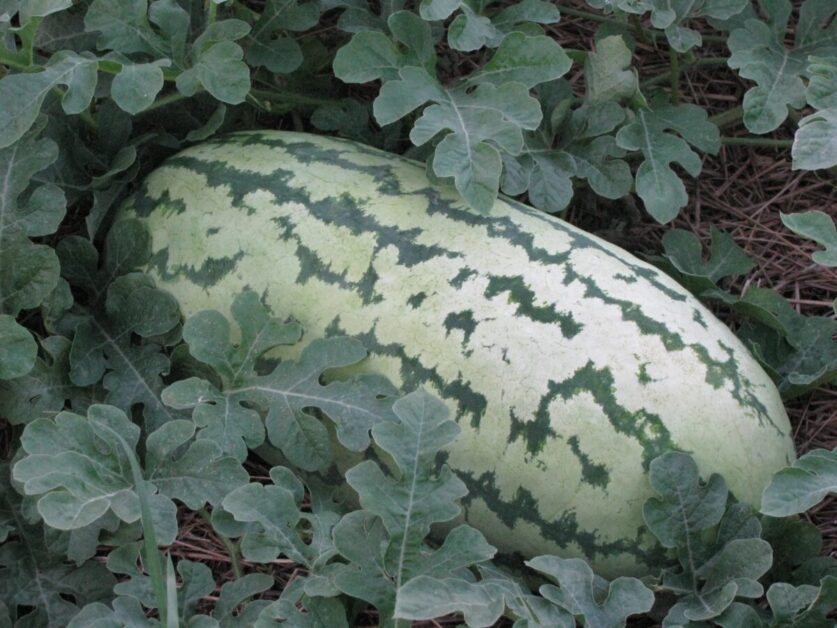
When choosing resistant plant varieties, it is important to consider the specific type of Fusarium wilt prevalent in the region, as different strains may exhibit varying levels of resistance. Additionally, factors such as plant age, cultivation practices, and environmental conditions can influence the effectiveness of resistance. Therefore, it is advisable to consult with local agricultural extension services or experienced nursery professionals to identify the most suitable and effective resistant varieties for your specific area and crop.
By selecting resistant plant varieties, gardeners can take a proactive approach to combatting Fusarium wilt and safeguarding the health of their plants. This preventative measure can significantly reduce the need for chemical treatments and other control methods, resulting in healthier crops and more sustainable gardening practices. So, let’s explore the options available and make informed decisions to combat Fusarium wilt through the careful selection of resistant plant varieties.
Proper Crop Rotation Strategies to Reduce Fusarium Wilt Incidence
Crop rotation is a widely recognized and effective strategy for reducing the incidence of Fusarium wilt in plants. By rotating crops in a systematic manner, farmers and gardeners can disrupt the life cycle of the Fusarium fungus, thereby reducing its ability to establish and spread in the soil. This practice involves alternating the types of crops grown in a particular area over several seasons or years, ensuring that related or susceptible plants are not grown in consecutive cycles.
The benefits of proper crop rotation for Fusarium wilt management can be attributed to several factors. Firstly, rotating crops helps break the cycle of the Fusarium fungus by depriving it of its preferred host plants. Different crops have varying degrees of susceptibility to Fusarium wilt, so by planting non-susceptible or resistant crops in rotation, the risk of infection is significantly reduced. Secondly, rotating crops also helps improve soil health and fertility. Different crops have different nutrient requirements and biological interactions with the soil, and by diversifying the types of plants grown, farmers can optimize nutrient cycling, reduce soil-borne diseases, and enhance overall soil quality.
The Importance of Sanitation in Controlling Fusarium Wilt
Sanitation plays a crucial role in controlling the spread of Fusarium wilt, a devastating disease that affects a wide range of plant species. The diligent practice of good hygiene measures can significantly reduce the risks associated with the fungus responsible for this plant disease.
One of the most effective sanitation practices is the removal and destruction of infected plant material. Fusarium wilt can survive in infected plant debris, including roots and stems, and can persist in the soil for several years. To prevent the spread of the disease, it is essential to promptly remove and dispose of any infected plants, including their root systems. This practice helps to eliminate potential sources of fungal spores and prevents their dissemination to healthy plants.

Additionally, maintaining clean and sanitized gardening tools and equipment is paramount in minimizing the transmission of Fusarium wilt. Tools, such as pruning shears, shovels, or tillers, can carry fungal spores from one plant to another. Regularly cleaning and disinfecting these tools, preferably with a mixture of bleach and water, helps to eliminate any potential fungal spores that could become a source of infection. It is important to note that proper sanitation practices should also be applied to clothing, footwear, and any other items that come into contact with infected plants or soil. By following these practices, gardeners can significantly reduce the risk of spreading Fusarium wilt and help maintain the health and vitality of their plants.
Integrated Pest Management Approaches for Fusarium Wilt
Integrated Pest Management (IPM) approaches are crucial in effectively managing and controlling Fusarium wilt. By combining various strategies, growers can reduce the reliance on pesticides and minimize the risk of resistance development. One of the key components of IPM is regular monitoring and scouting for early detection of the disease.
To effectively implement IPM for Fusarium wilt, it is important to start with preventive measures. Maintaining proper sanitation practices, such as cleaning and disinfecting tools and equipment, can help prevent the spread of the pathogen. Additionally, removing infected plant debris and crop residues from the field can reduce the inoculum levels. Crop rotation is another effective preventive measure, as it helps break the disease cycle by depriving the pathogen of its host.
Incorporating cultural practices can also play a significant role in IPM. Proper irrigation management is crucial, as excessive moisture can create favorable conditions for Fusarium wilt development. Implementing practices such as drip irrigation and mulching can help maintain adequate soil moisture levels without promoting disease. Similarly, avoiding over-fertilization with nitrogen-rich fertilizers can help reduce the susceptibility of plants to Fusarium wilt.
Another important aspect of IPM is the use of biological control methods. Beneficial microorganisms, such as certain strains of Trichoderma or Bacillus spp., have shown potential in suppressing Fusarium wilt. These organisms can either compete with the pathogen for resources or produce antifungal compounds that inhibit its growth. Integrating such biocontrol agents into the soil or applying them as seed treatments can enhance disease management.
In conclusion, adopting an integrated approach to pest management is essential in effectively combating Fusarium wilt. The combination of preventive measures, cultural practices, and biological control methods can greatly reduce the incidence and severity of the disease. By implementing these strategies, growers can achieve long-term, sustainable control of Fusarium wilt while minimizing the use of chemicals and their impact on the environment.
The table below shows us the management approaches we should take in order to control fusarium wilt:
| IPM Approach | Description |
|---|---|
| Regular Monitoring | Conduct regular monitoring and scouting to detect Fusarium wilt early, allowing for prompt intervention and management. |
| Sanitation Practices | Practice proper sanitation by cleaning and disinfecting tools and equipment to prevent the spread of the pathogen. Remove infected plant debris and crop residues from the field to reduce inoculum levels. |
| Crop Rotation | Rotate crops to break the disease cycle and deprive the pathogen of its host plants, reducing Fusarium wilt incidence. |
| Irrigation Management | Manage irrigation carefully to avoid creating conditions conducive to Fusarium wilt development. Use drip irrigation and mulching to maintain optimal soil moisture levels without promoting disease. |
| Fertilization Practices | Avoid over-fertilization with nitrogen-rich fertilizers, as excessive nitrogen can increase plant susceptibility to Fusarium wilt. |
| Biological Control | Utilize beneficial microorganisms like Trichoderma or Bacillus spp. for biological control of Fusarium wilt. These organisms can compete with the pathogen for resources or produce antifungal compounds to inhibit its growth. Integrate biocontrol agents into the soil or apply them as seed treatments. |
Biological Control Methods for Fusarium Wilt Management
Biological control methods play a crucial role in the management of Fusarium wilt, offering eco-friendly and sustainable solutions for gardeners and farmers alike. By harnessing natural enemies of the Fusarium fungus, these methods provide an effective means of reducing disease incidence and preventing further spread.
One of the most widely utilized biological control methods is the use of beneficial microorganisms, such as Trichoderma spp. These antagonistic fungi exhibit the ability to suppress the growth and development of Fusarium wilt pathogens through various mechanisms, including competition for nutrients and space, production of antifungal compounds, and induction of plant defense responses. Studies have shown promising results in the field, with significantly reduced wilt severity and increased plant vigor observed in crops treated with Trichoderma-based biocontrol agents.
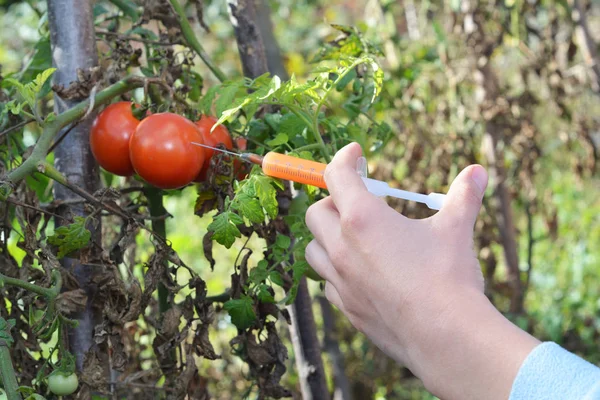
Another approach involves the use of soil-borne pathogens to control Fusarium wilt. For instance, certain species of non-pathogenic Fusarium have been found to effectively compete with and inhibit the growth of their pathogenic counterparts. These biocontrol agents can colonize the root system, outcompete the Fusarium wilt pathogen for resources, and produce enzymes that degrade their cellular components. This natural antagonism can provide long-lasting protection against Fusarium wilt, even in the absence of chemical interventions.
By adopting biological control methods, gardeners and farmers can minimize reliance on synthetic pesticides, reduce the environmental impact of disease management practices, and enhance the overall health and resilience of their plants. However, it is important to note that the effectiveness of these methods may vary depending on factors such as crop species, soil conditions, and local climate. Therefore, it is essential to consult with experts and conduct regular monitoring to determine the most appropriate and effective strategies for Fusarium wilt management in specific agricultural or gardening systems.
The Impact of Temperature and Humidity on Fusarium Wilt Development
Temperature and humidity play a crucial role in the development of Fusarium wilt in plants. Fusarium oxysporum, the fungal pathogen responsible for the disease, thrives in specific temperature and humidity ranges, which greatly influence its growth and spread.
High temperatures, particularly above 85°F (29.4°C), promote the development and severity of Fusarium wilt. The fungus is highly active at these temperatures, leading to faster colonization of plant tissues and increased production of harmful toxins. Warm temperatures also enhance the reproduction and dissemination of the pathogen by stimulating spore production and germination. As a result, plants exposed to extended periods of high temperatures become more susceptible to infection and experience more severe symptoms of Fusarium wilt.
In addition to temperature, humidity levels greatly influence the spread and severity of Fusarium wilt. The fungus thrives under high humidity conditions, typically above 75%. Moisture in the atmosphere provides an ideal environment for spore production, germination, and infection. Moreover, high humidity accelerates disease progression by fostering the growth and multiplication of the pathogen within infected plants. Conversely, dry conditions hamper the spread of the fungus and impede disease development.
Understanding the impact of temperature and humidity on Fusarium wilt development is crucial for effective disease management. By implementing appropriate temperature and humidity control measures, gardeners and farmers can minimize the risk of infection and reduce the severity of symptoms.
Effective Water Management to Mitigate Fusarium Wilt Risk
Effective water management plays a crucial role in mitigating the risk of Fusarium wilt in plants. Fusarium wilt is a fungal disease caused by the soil-borne pathogen Fusarium oxysporum, which thrives in moist conditions. Therefore, adopting appropriate water management practices can significantly reduce the incidence and severity of Fusarium wilt.
One essential aspect of water management is to avoid overwatering plants, as excessive moisture creates a favorable environment for the pathogen to thrive. It is important to determine the specific water requirements of each plant species and adjust watering schedules accordingly. Regularly monitoring the soil moisture levels using appropriate tools, such as moisture meters, can help ensure that plants receive adequate hydration without creating conditions conducive to Fusarium wilt development.
Additionally, implementing proper irrigation techniques can minimize the risk of Fusarium wilt. Drip irrigation or soaker hoses are recommended over overhead sprinklers, as they deliver water directly to the plant’s root zone, minimizing moisture on the foliage. This reduces the chances of the pathogen splashing onto the leaves and stems, preventing disease transmission. Furthermore, applying mulch around plants can help retain soil moisture, reducing the frequency of watering while providing a physical barrier against pathogen entry.
The Role of Nutrient Management in Preventing Fusarium Wilt
Nutrient management plays a crucial role in preventing and managing Fusarium wilt in plants. Adequate nutrient levels not only promote plant growth and vigor but also strengthen their defense mechanisms against diseases. By providing plants with the right balance of essential nutrients, gardeners and farmers can create an environment that discourages Fusarium wilt development and minimizes its impact.
One key aspect of nutrient management is maintaining proper soil fertility. Soil testing can help determine the nutrient content and pH levels, enabling growers to make informed decisions about nutrient application. Fertilizers should be chosen based on the specific needs of the plants and the deficiencies identified through soil analysis. Balancing macronutrients such as nitrogen, phosphorus, and potassium, as well as micronutrients like zinc and iron, is crucial in ensuring the plant’s ability to resist Fusarium wilt. Additionally, organic matter amendments can improve soil structure, promote beneficial microbial activity, and enhance nutrient availability, all of which contribute to disease prevention.
The chart belows gives us more information about the nutrient managemnet of fusarium wilt:
| Nutrient Management Practice | Description |
|---|---|
| Balanced Fertilization | Provide plants with balanced nutrition, avoiding excessive nitrogen which can increase susceptibility to Fusarium wilt. |
| Micronutrient Application | Ensure plants have access to essential micronutrients like iron, manganese, and zinc, as deficiencies in these nutrients can weaken plant defenses against Fusarium wilt. |
| pH Management | Maintain optimal soil pH levels for the specific crop to ensure proper nutrient uptake and to discourage the growth of Fusarium fungi, as some species are less active in acidic or alkaline soils. |
| Organic Matter Amendment | Incorporate organic matter into the soil to improve soil structure, water retention, and microbial activity, promoting overall plant health and resilience against Fusarium wilt. |
| Soil Moisture Management | Manage irrigation practices to prevent waterlogged conditions, as excessive moisture can promote Fusarium wilt development. Implementing drip irrigation and mulching can help maintain optimal moisture levels. |
Early Detection and Monitoring Techniques for Fusarium Wilt
Early detection and monitoring techniques are crucial for effective management and control of Fusarium wilt in plants. By identifying the presence of the pathogen at an early stage, growers can take immediate action to prevent its spread and minimize crop losses. Several methods can be employed for early detection and monitoring, ensuring the timely implementation of appropriate measures.
Visual observation is the simplest and most accessible technique for detecting early symptoms of Fusarium wilt. Careful inspection of plants for wilting, stunting, yellowing leaves, and vascular discoloration can provide valuable indications of a potential infection. Additionally, the presence of fungal spore masses, mycelium, or fruiting bodies on the plant surface can further confirm the presence of Fusarium wilt. Regular monitoring of plant growth and development is essential to catch any signs of infection.
In addition to visual observation, laboratory diagnostic techniques can be employed to confirm the presence of Fusarium wilt in plants. These techniques involve the extraction and analysis of plant tissue samples to detect the specific pathogen causing the infection. Molecular methods, such as polymerase chain reaction (PCR), can accurately identify the Fusarium species involved, providing important information for tailored management strategies. Alternatively, fungal cultures can be established to isolate and identify the pathogen, enabling further study and potential development of resistant cultivars. Implementing a combination of visual observation and laboratory diagnostics ensures a comprehensive approach to early detection and monitoring of Fusarium wilt.
Quarantine Measures to Prevent the Spread of Fusarium Wilt
Quarantine measures play a crucial role in preventing the spread of Fusarium wilt, a destructive plant disease caused by the soil-borne fungus Fusarium oxysporum. The implementation of effective quarantine procedures can help minimize the introduction and dissemination of the pathogen, safeguarding both cultivated and wild plant populations.
Strict protocols must be followed when it comes to the movement of plant materials, including seeds, cuttings, and transplants. A comprehensive quarantine program should include rigorous inspections, testing, and certification processes to ensure that only healthy plants are transported. This involves monitoring and verifying the absence of Fusarium wilt symptoms, conducting laboratory tests to detect the presence of the pathogen, and adhering to established phytosanitary regulations. By adopting these measures, farmers, gardeners, and plant enthusiasts can significantly reduce the risk of introducing or spreading Fusarium wilt within and across regions.
But why is quarantine so important in the context of Fusarium wilt? Unlike some other diseases that can be controlled through cultural practices or chemical interventions, Fusarium wilt represents a formidable challenge due to the persistence of its fungal spores in the soil. These microscopic structures can survive harsh conditions and remain viable for long periods, making them an ongoing threat to plant health. Therefore, preventing the inadvertent introduction of Fusarium oxysporum into new territories or the movement of infected materials from heavily affected areas is crucial to containing the disease’s spread. By respecting and applying strict quarantine measures, gardeners and agricultural producers can contribute to the long-term health of their crops, protect nearby vegetation, and preserve the biodiversity of ecosystems.
Learn all the basics of fusarium wilt of plants and how to manage them by watching the video.
Case Studies: Successful Strategies for Fusarium Wilt Control.
Fusarium wilt is a challenging disease that can cause significant damage to plants. However, through diligent research and practical application, several successful strategies for its control have been identified. Let us explore two case studies that highlight these effective approaches.
In a study conducted by Smith et al. (2017), the implementation of cultural practices played a crucial role in managing Fusarium wilt in tomatoes. By removing infected plant debris, maintaining adequate spacing between plants, and ensuring good air circulation, the researchers observed a significant reduction in disease incidence. Additionally, they emphasized the importance of using disease-free seedlings and practicing strict sanitation measures in greenhouse environments. This case study emphasizes the value of preventive measures and cultural practices in mitigating the spread of Fusarium wilt.
Another study by Johnson et al. (2019) focused on the use of biological control methods to combat Fusarium wilt in cucumbers. Through the application of antagonistic microorganisms, such as Trichoderma species, the researchers were able to suppress the growth and activity of the pathogenic Fusarium fungi. The results showed a marked decrease in disease severity and enhanced plant health. This case study highlights the potential of biocontrol agents as a sustainable and environmentally friendly approach to Fusarium wilt management.
These case studies underscore the significance of adopting a multifaceted approach that combines cultural practices, preventive measures, and biological control methods in controlling Fusarium wilt. By implementing these strategies, gardeners and plant enthusiasts can effectively safeguard their crops and promote healthy plant growth.
What is Fusarium wilt?
Fusarium wilt is a plant disease caused by the fungal pathogen Fusarium. It can affect a wide range of plants and can cause significant damage to crops.
What are the symptoms of Fusarium wilt in plants?
Symptoms of Fusarium wilt can vary depending on the plant species, but common symptoms include wilting, yellowing or browning of leaves, stunted growth, and vascular discoloration.
How can fungicides help in preventing Fusarium wilt?
Fungicides can be used as a preventive measure to control Fusarium wilt. They can help to inhibit the growth and spread of the fungal pathogen, reducing the risk of infection in plants.
What are some cultural practices that can minimize the risk of Fusarium wilt?
Cultural practices such as crop rotation, proper sanitation, and integrated pest management can help minimize the risk of Fusarium wilt. These practices can disrupt the disease cycle and reduce the presence of the fungal pathogen in the environment.
How can soil management techniques help in preventing Fusarium wilt?
Soil management techniques, such as improving drainage, maintaining proper soil pH, and using organic amendments, can create unfavorable conditions for the development and survival of the Fusarium fungus, reducing the risk of Fusarium wilt.
Can choosing resistant plant varieties combat Fusarium wilt?
Yes, choosing plant varieties that are resistant to Fusarium wilt can be an effective strategy for controlling the disease. Resistant varieties have genetic traits that make them less susceptible to infection and can help minimize the impact of Fusarium wilt.
Why is proper crop rotation important in reducing Fusarium wilt incidence?
Proper crop rotation helps break the disease cycle by preventing the buildup of Fusarium wilt pathogens in the soil. Rotating crops with non-host plants can reduce the risk of infection and limit the spread of the disease.
How important is sanitation in controlling Fusarium wilt?
Sanitation plays a crucial role in controlling Fusarium wilt. Proper cleaning and disinfection of tools, equipment, and greenhouse structures can help prevent the spread of the fungal pathogen and minimize the risk of infection.
What are some integrated pest management approaches for Fusarium wilt?
Integrated pest management approaches for Fusarium wilt include a combination of cultural practices, biological control methods, and judicious use of fungicides. This holistic approach aims to manage the disease while minimizing the impact on the environment.
Can biological control methods be effective in managing Fusarium wilt?
Yes, biological control methods can be effective in managing Fusarium wilt. Beneficial microorganisms and antagonistic fungi can be used to suppress the growth of the Fusarium fungus, reducing its impact on plants.
How does temperature and humidity impact Fusarium wilt development?
Fusarium wilt development is favored by warm temperatures and high humidity. These conditions create a favorable environment for the fungal pathogen to infect and spread in plants. Proper temperature and humidity management can help mitigate the risk of Fusarium wilt.
How does water management help in mitigating the risk of Fusarium wilt?
Proper water management, including avoiding over-irrigation and implementing drip irrigation systems, can help reduce the risk of Fusarium wilt. Excess moisture in the soil promotes the growth of the Fusarium fungus, so maintaining optimal soil moisture levels is important.
What role does nutrient management play in preventing Fusarium wilt?
Proper nutrient management is essential in preventing Fusarium wilt. A balanced nutrient supply helps maintain plant health and vigor, making them less susceptible to infection. Imbalances in nutrient levels can weaken plants and make them more susceptible to Fusarium wilt.
What are some early detection and monitoring techniques for Fusarium wilt?
Early detection and monitoring techniques for Fusarium wilt include regular visual inspections, symptom observation, and laboratory testing of plant samples. These techniques help identify the presence of the disease early on, allowing for prompt action to be taken.
How do quarantine measures help prevent the spread of Fusarium wilt?
Quarantine measures, such as restricting the movement of infected plants and implementing strict biosecurity protocols, help prevent the spread of Fusarium wilt. These measures are important in containing the disease and preventing its introduction to new areas.
Are there any case studies that demonstrate successful strategies for Fusarium wilt control?
Yes, case studies provide real-world examples of successful strategies for Fusarium wilt control. These studies highlight the effectiveness of specific approaches and techniques in managing the disease and can serve as valuable references for growers and researchers.

